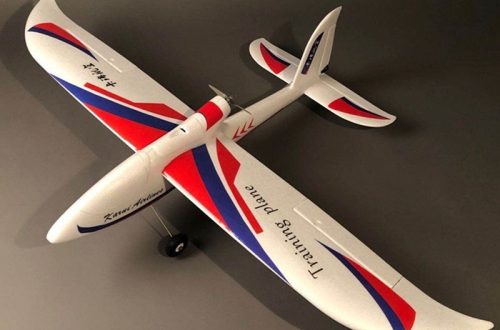Part 1: The Importance of Outdoor Play
1. Physical Health:
Outdoor play is paramount for children’s physical health as it offers a dynamic platform for engaging in various physical activities that are vital for their overall well-being. The freedom and space provided by the outdoors enable children to partake in activities such as running, jumping, and climbing, facilitating the development of essential motor skills, muscle strength, and coordination. These physical movements not only contribute to the enhancement of children’s gross motor skills but also play a significant role in promoting cardiovascular health and endurance. Additionally, outdoor play allows children to partake in activities that help them develop proprioception and spatial awareness, further supporting their physical development. By engaging in these outdoor activities, children are empowered to cultivate healthy lifestyles and establish positive habits that will benefit their physical health in the long run.
2. Mental Well-being:

The outdoors serve as a source of mental rejuvenation and enrichment for children, with ample evidence demonstrating the positive impact of outdoor play on mental well-being. The natural surroundings and exposure to sunlight during outdoor play have been noted to contribute to improved mental health among children. Spending time outdoors has been associated with reduced stress levels, decreased anxiety, and a greater sense of overall happiness and positivity in children.
The natural environment offers children a space to unwind, interact with the elements, and engage in open-ended, unstructured play, which can serve as a form of therapeutic release from the demands and pressures of daily life. Furthermore, outdoor activities encourage children to take in the sights and sounds of the natural world, fostering an appreciation for the environment and contributing to enhanced emotional well-being. Overall, outdoor play acts as a conduit for fostering children’s holistic development, nurturing their physical health and mental well-being concurrently.
Part 2: The Benefits of Outdoor Toys
1. Encourages Creativity:
Outdoor play presents an environment rich with opportunities for children to unleash their creativity and explore their imagination. Toys like building blocks, sand and water tables, and gardening tools offer a canvas for children to express their creativity through open-ended play. When children engage with building blocks, they have the freedom to construct and design their creations, fostering problem-solving skills and spatial reasoning. Similarly, sand and water tables provide a sensory platform for tactile exploration, allowing children to sculpt, experiment, and create imaginative scenarios. Through interacting with gardening tools, children have the chance to learn about plant life, engage in hands-on exploration, and foster a sense of responsibility by tending to living plants. These activities not only encourage creativity but also allow children to develop a deep connection with the natural world, nurturing a sense of curiosity and wonder that promotes lifelong learning and exploration.
2. Social Skills Development:
Outdoor toys play a crucial role in facilitating the development of vital social skills in children through cooperative and group play. Toys like balls, bicycles, and team sports equipment create opportunities for children to engage in group activities, fostering communication, cooperation, and teamwork. When children participate in ball games, they learn to collaborate, strategize, and engage in fair play, promoting a sense of sportsmanship and teamwork. Riding bicycles promotes shared experiences and encourages children to take turns, negotiate and communicate, enhancing their social interaction skills.
Similarly, engaging in team sports with equipment such as soccer balls or basketball hoops encourages children to cooperate with others, resolve conflicts, and work together towards common goals. These activities help children develop empathy, respect, and consideration for others, laying the foundation for strong social skills and positive relationships. Overall, outdoor toys promote the development of both creative and social skills, enriching children’s play experiences and fostering holistic growth.

Part 3: Must-Have Outdoor Toys for Active Play
1. Ride-On Toys:
Ride-on toys are instrumental in enabling children to engage in invigorating physical activities while honing their motor skills. Items like scooters, bikes, and rollerblades offer children an avenue to improve their balance, coordination, and overall physical fitness. Riding a scooter, for instance, requires children to master balance and control, promoting the development of core strength and stability. Similarly, biking offers an excellent opportunity for children to enhance their balance, coordination, and spatial awareness. The act of pedaling and steering a bike not only encourages physical activity but also provides a sense of independence and freedom. Rollerblading presents a challenge that stimulates children’s motor skills and fosters a deeper appreciation for the importance of coordination and agility. These ride-on toys offer an engaging and enjoyable means for children to build strength, improve their motor skills, and develop a lifelong love for physical activity.
2. Sports Equipment:
The availability of sports equipment such as balls, frisbees, and other outdoor gear plays an integral role in promoting fitness, skill development, and social interaction among children. These tools offer the perfect backdrop for fun and stimulating outdoor activities that cater to varying interests and abilities. Engaging in games involving balls, such as soccer, basketball, or catch, encourages children to hone their motor skills, hand-eye coordination, and spatial awareness while also promoting physical fitness. Playing with frisbees provides an outlet for children to develop throwing and catching skills, fostering precision and control.
Similarly, other sports equipment like badminton sets or cricket bats allow children to explore different physical activities, developing diverse movement skills and refining their hand-eye coordination. Additionally, participating in sports activities with this equipment cultivates a sense of friendly competition and teamwork, promoting social skills and cooperation. The inclusive nature of sports equipment ensures that children can find activities that are both challenging and enjoyable, contributing to their overall physical and cognitive development.
Part 4: Engaging Outdoor Toys for Imaginative Play
1. Playhouses and Tents:
The introduction of playhouses and tents into a child’s outdoor play space serves as a catalyst for fostering imaginative and creative play. These structures offer children a designated area where they can immerse themselves in role-playing and imaginative scenarios, empowering them to explore their creativity and expand their scope of imagination. Within these playhouses and tents, children can assume various roles, create fictional environments, and engage in make-believe interactions, promoting the development of storytelling abilities and social skills. Such imaginative play contributes to cognitive development as children learn to invent scenarios, problem-solve within their play narratives, and exercise their creativity through pretend play.

Additionally, these spaces offer a sanctuary for children to retreat to, providing a sense of ownership and control, which can contribute to their emotional well-being. Through the setting of playhouses and tents, children can delve into a world of creativity, expression, and imaginative exploration, enhancing their overall development in a safe and stimulating environment.
2. Gardening Tools:
Child-sized gardening tools, including shovels, rakes, and watering cans, not only instill an appreciation for the natural world but also provide children with an opportunity to engage in physical activity and learn about responsible environmental stewardship. These gardening tools support hands-on exploration of the outdoor environment, enabling children to actively participate in caring for plants, exploring the properties of soil and water, and discovering the intricate workings of the ecosystem. Through gardening activities, children develop an understanding of the cycle of growth and the interconnectedness of living organisms.
Moreover, tending to plants with these tools imbues a sense of responsibility, as children learn to care for living things and understand the impact of their actions on the environment. Through these experiences, children gain valuable insights into the miracles of nature and the significance of environmental conservation. Gardening activities also provide a medium for physical exercise, as children engage in tasks that promote gross motor skills, coordination, and sensory exploration. Ultimately, gardening tools offer children a hands-on and enriching experience that fosters a deeper connection with nature while nurturing a sense of environmental awareness and responsibility.
Part 5: Educational Outdoor Toys
1. Science Kits:
Science kits for outdoor exploration such as bug catchers, binoculars, and magnifying glasses encourage children to explore and observe the natural world, fostering a love for learning and curiosity about the environment.
2. Outdoor Art Supplies:
Chalk, paint, and easels for outdoor art activities allow children to express their creativity and engage in sensory experiences, while also developing fine motor skills and visual-spatial awareness.
Part 6: Safety Tips for Outdoor Play
1. Supervision:
It’s important for adults to supervise children during outdoor play to ensure their safety and well-being, especially when using outdoor toys that require protective gear or close supervision.
2. Proper Gear:
When engaging in outdoor activities, children should wear appropriate protective gear such as helmets, knee pads, and sunscreen to ensure their safety and prevent injuries.





